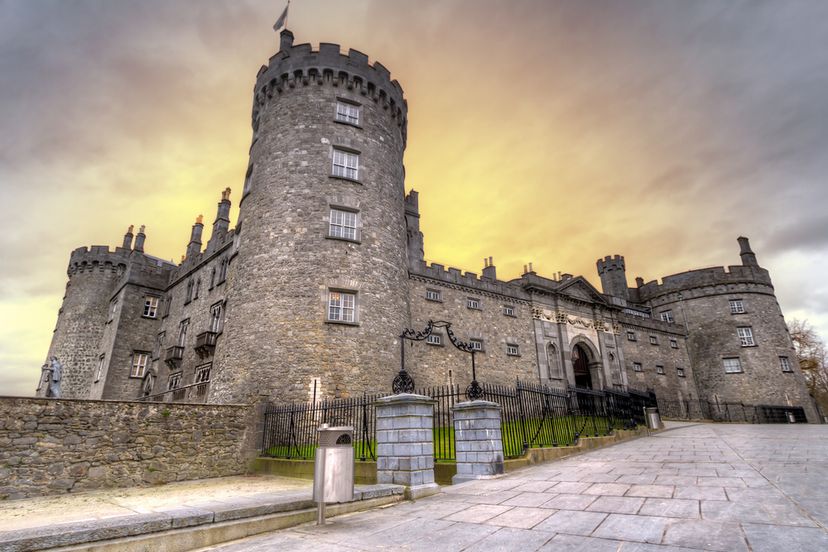
Ireland is an amazing land steeped in natural resources, historical remnants, and resounding culture. Sprawling estates with lush rolling hills create the iconic greenery that is universally associated with Ireland. These breathtaking landscapes are not limited to the Irish countryside. City centers offer a unique look at modern lifestyles, living arrangements, and business activities that all take place in new buildings which are perfectly nestled alongside ancient stone structures. Several centuries are simultaneously represented within a relatively small area of land as old meets new and tradition intersects with progress.
Amid all the other interesting attractions and expeditions that a tourist can enjoy during a trip to Ireland, there is one aspect that simply cannot be missed. The quintessential structures that stand tall throughout the land represent summer homes of the wealthy and leadership centers for royal families. The awesome castles that can be found in virtually every Irish territory are constant reminders of how much ancient civilizations have transformed and how customary traditions still impact the culture today. Literally thousands upon thousands of castles and partial ruins of castles are strewn about the Irish landscape. Visitors often struggle with planning trips that include castle tours because of the sheer number of sites available. Although each castle offers a unique and awe inspiring experience, these fifteen castles of Ireland are definitely among the top picks for any travel guide.
Advertisement
1. Blarney Castle
Perhaps the most important landmark castle in all of Ireland, the Blarney Castle has been standing for over six centuries and continues to grab the attention of countless new visitors each year. The existing structure is the third to occupy the property and was once the home of Cormac MacCarthy, King of Munster. It was under his reign that the infamous Blarney Stone became an international legend. Over the next few hundred years, ownership of the castle and rule over the land underwent many changes. The Blarney House was subsequently erected and remains today, still in the ownership of the Jefferyes family. Aside from the obvious beauty, one of the biggest attractions of the Blarney Castle is the Blarney Stone, which is said to evoke mystical properties. Anyone who kisses the Blarney Stone will be able to eloquently speak and persuade both friends and enemies to agree with their way of thinking.
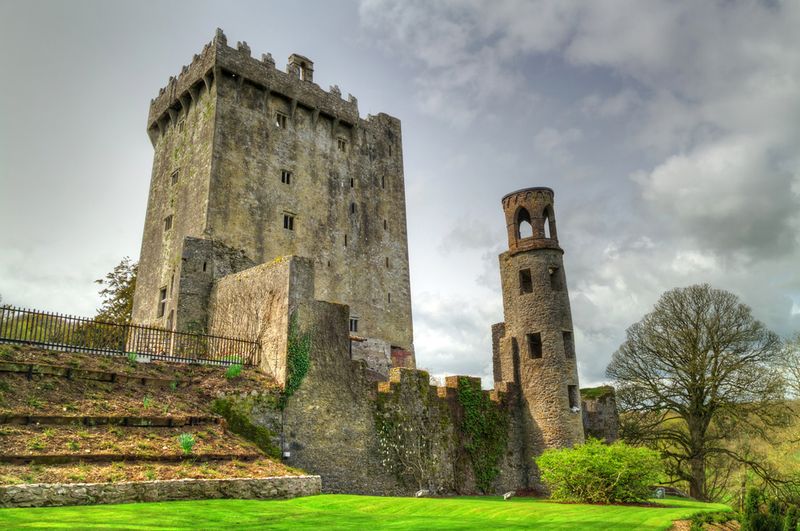
2. Dunluce Castle
Once the hub of an important defensive fort, the ruins of Dunluce Castle still pose an intimidating image in Northern Ireland. Visitors can partake of daily tours by crossing a bridge to the Antrim Coast and accessing the formidable stone walls and massive stone structures that once held scores of armed guards. Verifiable archaeological records indicate that the castle was inhabited in 1513 by the MacQuillan family. Because of the unique vantage point and practically impenetrable rocky cliffs below it, the site was usually involved in some sort of ownership battle. Viking and Christian crusaders both claimed equal stake in overtaking the land over the tumultuous centuries. Years of erosion, neglect, and decay resulted in large sections of the stone giving way into the cold seawater below. Although the original inhabitants abandoned the site many years ago, visitors are easily able to imagine how important the Dunluce Castle was to economic and military forces of the fourteenth century.
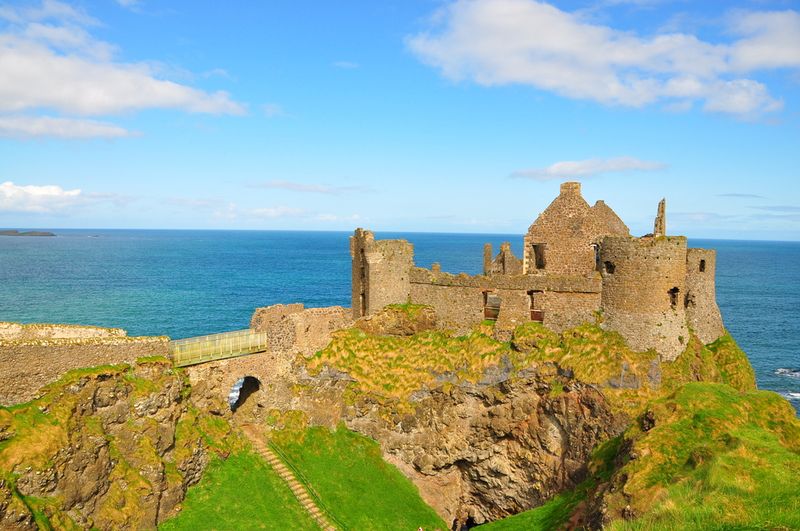
3. King John’s Castle
Just north of the Limerick city center lies the dormant remains of King John’s Castle, named after the Sovereign of England from 1199 to 1216. The site itself actually served for many years during the sixth and seventh centuries as a Viking defense and communication center. Armed guards were on duty at all hours of the day and night to protect the area against riverfront intruders. Although the relatively flat land easily accessible and more suitable as a marketplace than a defensive barrack, the local inhabitants insisted on a military base in the center of the land. Tall gates provided lookouts for wall guards and presented local townspeople as well as potential enemies with a serious obstacle to overcome. Today, King John’s Castle is remarkably intact and open to public tours. Visitors can wander through various rooms and corridors of the present day administration and tourism center. This is one of the few castles in the United Kingdom that was originally set within a town rather than the countryside.

4. Ross Castle
Beautiful Killarney National Park features a sprawling countryside property complete with an enchanted lake and the historic Ross Castle. The Browne family, who became the Earls of Kenmare, were among the original inhabitants of the massive white stone castle. Construction was completed in the 15th century by O’Donoghue Mór, who fought against everything to keep the property a place of peace and tranquility. Ultimately, the castle was the final remaining stronghold in all of Munster. When it finally succumbed to the fatal army led by General Ludlow in 1652, the nation mourned. Like many other Irish castles, the Ross Castle is believed to have mystical properties. Colorful stories about O’Donoghue Mór still circulate to this day. Visitors who arrive at just the right time have the chance to peek at the valiant owner circling the lake on his white stallion. Those who do see the lonely rider will experience good luck and miracles for the rest of their days.
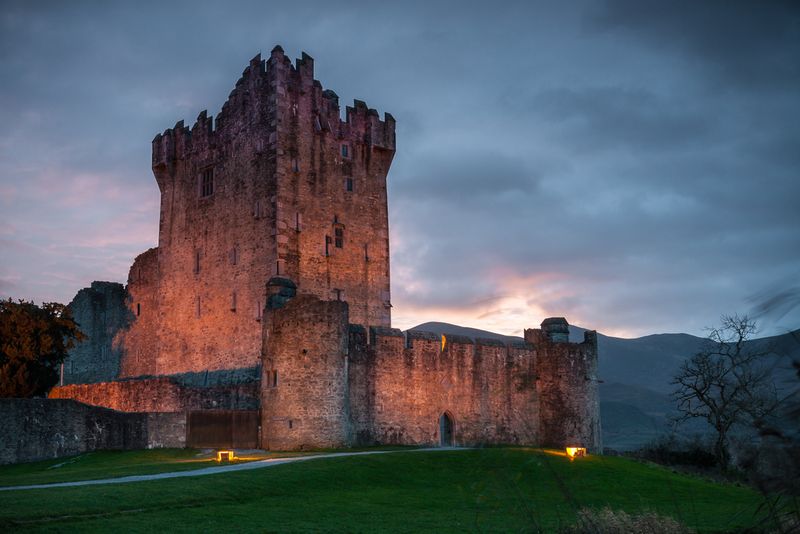
Advertisement
5. Malahide Castle
Malahide Castle, which boasts nearly 300 acres of land, is one of the largest remaining castles in all of Ireland. Lovingly maintained and recently restored, this picture of excellence is among the most popular Irish castles. The close proximity to Dublin also makes Malahide Castle an easy item to add to any checklist for visitors. Most families prefer to stay for several days to enjoy the plethora of activities and to investigate the museum exhibits that fill the open corridors. The Talbot family preserved so much of the rich history and original architecture that visitors are still reaping the benefits of this majestic castle more than four hundred years after its last recorded use as a country home. Beautiful courtyards make excellent venues for weddings and other major events. A full service marketplace instantly transports visitors to a bygone era. The awesome views, including mountains, waterways, and rolling hills must be experienced firsthand to be truly understood.
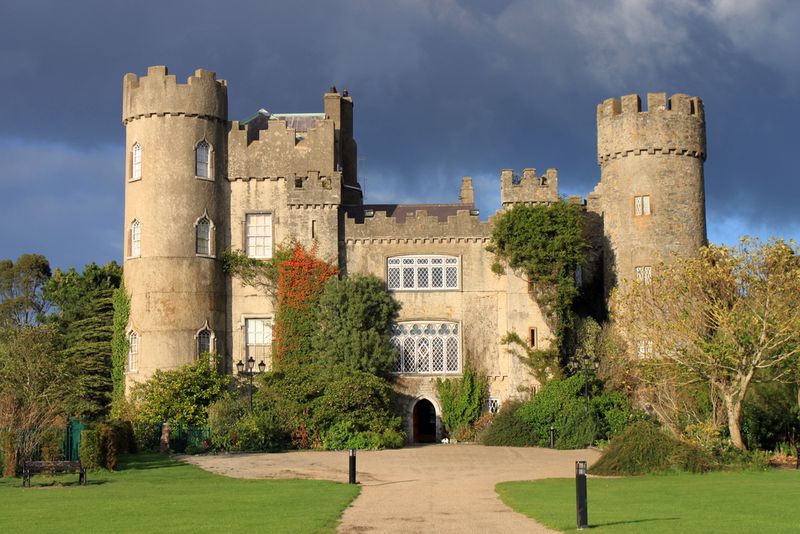
6. Kilkenny Castle
Aerial views of the Kilkenny Castle are synonymous with Irish culture and have been used in multiple tourism campaigns over the years. The expert design by William Marshal was very advanced for the time period. Construction was hastily completed in 1195 so that Marshal, the First Earl of Pembroke, could keep an eye on potential attackers from any angle. Today, the elaborate entrance corridor features photographs and details about the early inhabitants. Frequent tours showcase immaculately restored state rooms that feature furnishings and personal keepsakes that are accurate for the original time period. Local residents and tourists are invited to enjoy the museum style decor throughout the castle and on scattered about the beautiful property. The site of Kilkenny Castle was once a formidable fortress that stayed off enemy troops, but today enjoys a much more peaceful existence. The site is still consistently used by locals as a center for business, public, and private events. Charity fundraisers including scavenger hunts and other fun family events help raise awareness about a contemporary cause and allow tourists a chance to view the wonderful history of Ireland.
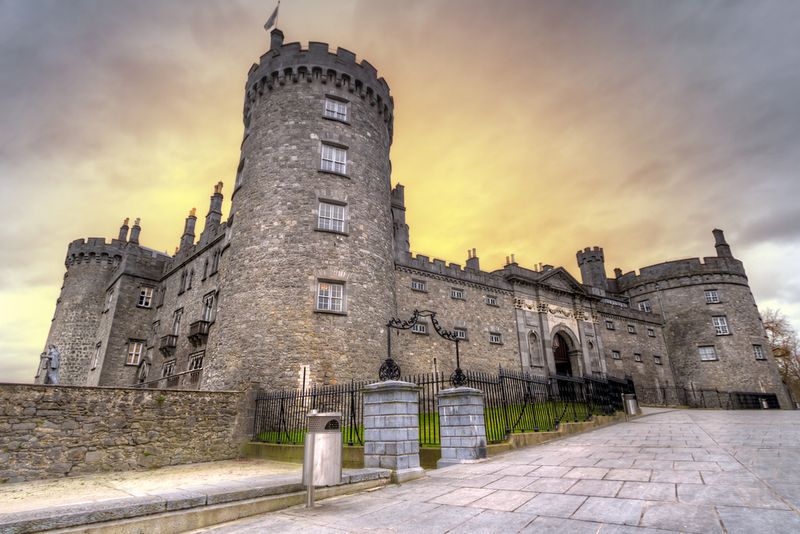
7. Blackrock Castle
A traditionally designed structure of elaborate stone pillars, Blackrock Castle has been standing in the same place since the sixteenth century. Conveniently located along the River Lee, this castle represented a major city infrastructure during affluent times in Ireland. Today, the castle is open to the public and offers a variety of engaging events for families of all ages. A world class observatory has been in consistent use by amateur and professional astronomers and meteorologists for several decades. A decidedly modern feel runs throughout the ancient structure as fine dining options and majestic staterooms intertwine with mossy stone and lookout points. The marketplace features an eclectic balance of traditional entertainment, historical memorabilia, and modern amenities. The cobblestone courtyards that once housed royal families and armed militia are still in place today. Open tours and resort style accommodations allow Blackrock Castle visitors a chance to explore their past and get in tune with ancient Irish customs and living standards.
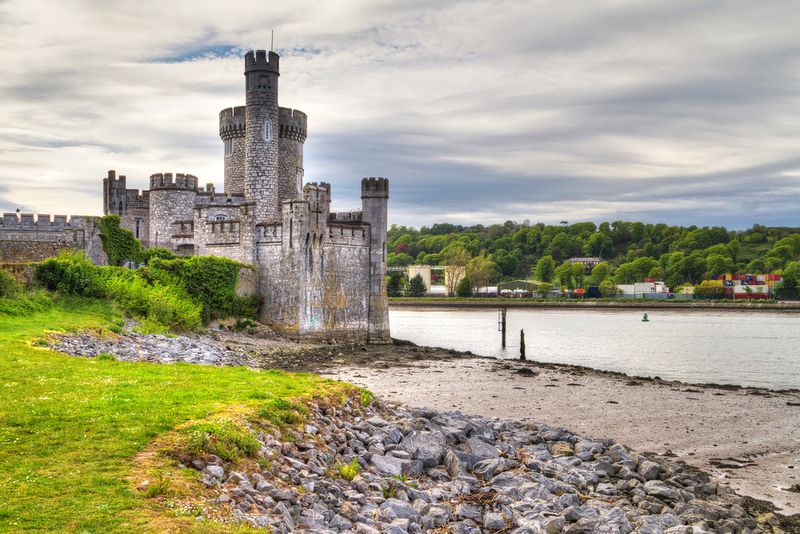
8. Doonagore Castle
A rather lonely and statuesque structure, Doonagore Castle graces the front of many calendars and postcards that feature famous landmarks of Ireland. Overlooking scenic Doolin Point, this sixteenth century tower was erected by Teige MacTurlough O’Conner and eventually used for rather sinister purposes. The effective lookout point was used as a protective covering for the Sea View House, which was home to many wealthy residents throughout the years. An agricultural community, Doolin was home to a rather large military composition as well as local farmers and merchants. In 1588, as retreating sailors from the Spanish Armada were attempting their getaway, an unexpected storm caused the weathered ship to crash against the rocky shores. All 170 survivors were captured, hanged, and buried at Doonagore Castle. Visitors today will certainly appreciate the interesting, if gruesome, history and the beauty of the views from the top of the tower. Remains of the Sea View House are still visible along much of the foundation stone and in multiple spots along the castle walls.
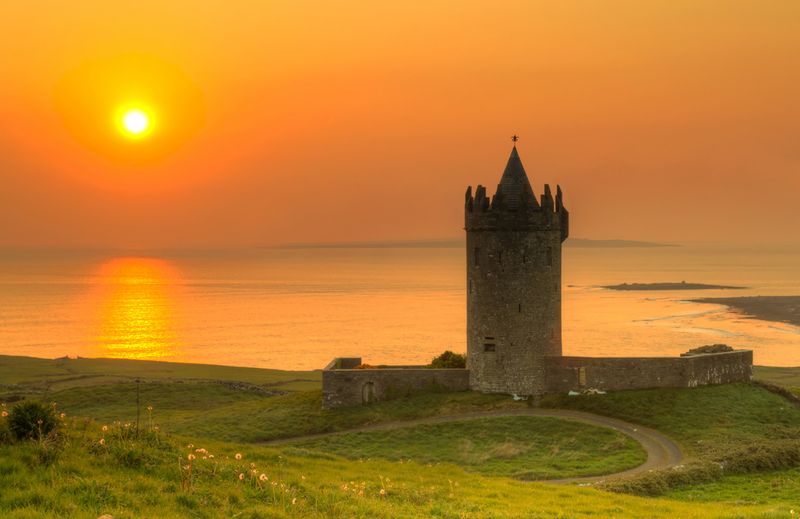
9. Bunratty Castle
Another impressive tower from the early fifteenth century, Bunratty Castle was created to protect and serve the villagers that lived just beyond its formidable stone walls. The name, loosely translated, means “Castle at the mouth of the Ratty” and was coined by early inhabitants. When the castle underwent restorative renovations in 1965, ancient recordings that dated back to 1422 were unearthed and gave a glimpse into the interesting and sordid past of Bunratty Castle and County Clare. Most historians believe that Vikings raided the land, overtaking settlers and setting up a base camp and reinforcement against potential enemies. Today, visitors can imagine the power that early groups had against intruders. From the towering stone walls to the blind corners throughout the castle grounds, raiding parties would not have been able to sustain their momentum without losing their sense of equilibrium. The Bunratty Castle and national park grounds are operated and maintained by the Shannon Heritage committee.
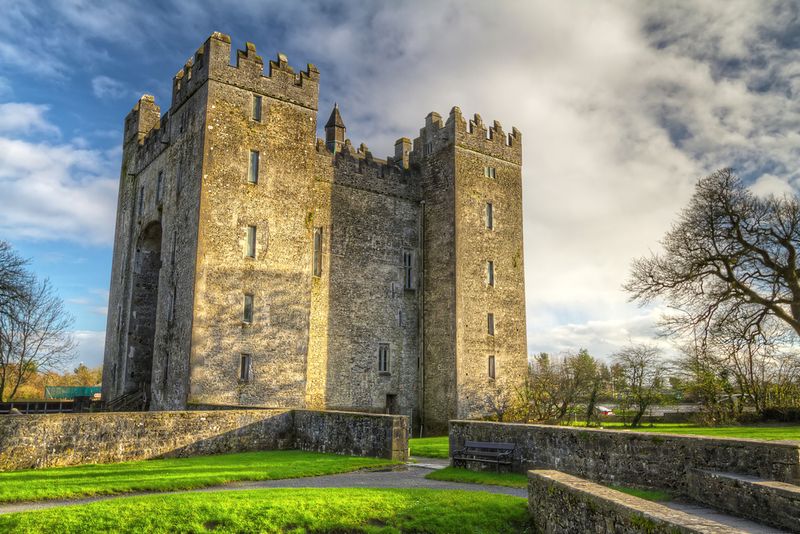
Advertisement
10. MacDermott’s Castle
One of the most amazing and most photographed castles in all of Ireland is MacDermott’s Castle. Located across a gorgeous lake and over 800 hectares, this castle is steeped in rich history and popular Irish folklore. Sometimes known as the hidden fortress, MacDermott’s castle is quietly hidden among dense forests and lush greenery. Lough Key is actually home to several small islands and still boasts the remnants of other, smaller castles from the fifteenth and sixteenth centuries. The land was originally inhabited by groups of Druids, who wanted to maintain a sheltered and peaceful existence for their future generations. There was not much peace to be had in ancient Ireland, and these castles and structures were fought over by many different groups over the course of several hundred years. The castle is accessible by stone bridge and visitors can still see much of what was originally built to house ancient Druid settlers.

11. Cahir Castle
One of the largest castles ever built in Ireland, Cahir Castle is still standing strong on an island in the Suir River. The buildings date back to the early twelfth century when construction was commissioned by then Prince of Thomond, Conor O’Brien. After more than two centuries of familial dwellings, the castle came under siege by rebels during the Irish Confederate Wars. After the battles ended, Cahir Castle was once again used as a home for wealthy and influential leaders. The massive structure and scenic surrounding properties are famous tourist attractions and popular choices for blockbuster movie scenes. Visitors who tour the national park today will have a unique experience as they encounter vivid imagery, a majestic way of life and terrifying invasions that rocked the Irish countryside from the fourteenth to the sixteenth centuries. A sordid history gives way to a magnificent future when it comes to the beautiful Cahir Castle.
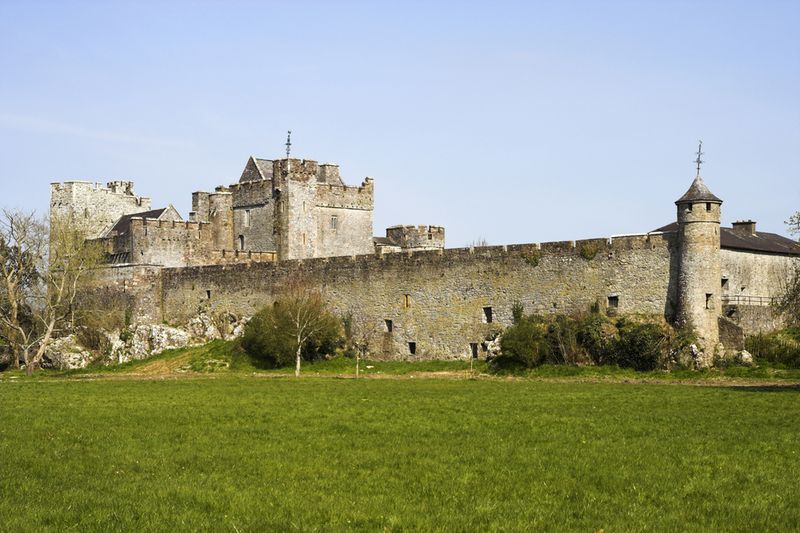
12. Dunguaire Castle
Another formidable tower from the sixteenth century, the Dunguaire Castle is now operated by the Shannon Heritage as a national landmark. The rich beauty and magnificent history of site are vividly displayed through museum style exhibits and knowledgeable tour guides. Overlooking Galway Bay, the castle provides an impressive display of simple yet effective architectural styling that was typical for the time period. Unlike many of the other towers and castles scattered about Ireland, this specimen was not dedicated to defensive or offensive military positions. At a time of rebirth and revival, the castle grounds were as likely to be used for cultural experiences as rebel events. Today, re-enactments feature period clothing, literature, music and dance that entertain and inspire local residents and visiting tourists. This majestic tower and sprawling landscape has been a consistent muse for creative and artistic personalities for centuries.

13. Rock of Cashel
Once a major center of religious affiliations, the Rock of Cashel is one of the most visited tourist attractions in the world. A Gothic Cathedral once stood on this sacred ground and allowed local residents a chance to claim their freedom and redemption under the watchful eye of a stoic priestly figure. The fully functional city center included private monasteries, public squares, centers of business operation, and private dwellings. Much of the territory looks the same today as it did during its original construction in the sixteenth century. Townspeople handcrafted ancient artifacts that were uncovered throughout the property during restoration efforts. A peaceful and progressive way of life ruled along the Rock of Cashel. Much of the credit goes to the somber religious cults which prevented much of the corruption from the rest of the mainland from entering the front gates.
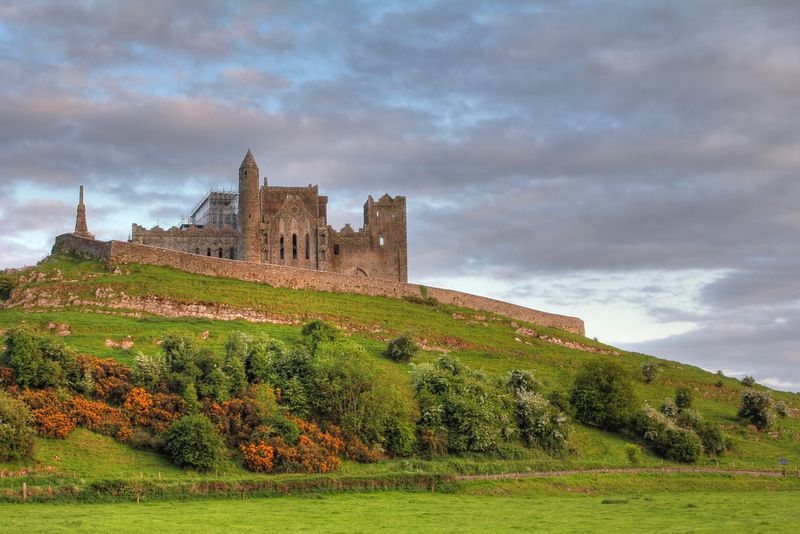
14. Trim Castle
This national historic site is maintained for public use and is frequently used for private and corporate events. Reflections from the majestic stone structure are magnificently bounced back by the still waters of the River Boyne. This was the largest Norman castle ever to be constructed in Ireland, and the family home of wealthy community leaders now serves as a private resort. There was little need for trading with outside merchants thanks to the self-sufficient townspeople and expert leadership. These features still exist on the property today. The 68 luxury state rooms may have modern details and amenities, but they speak to a time of ancient style and integrity. The lush grounds and sprawling landscape that once hosted traders and military guards now host golfers and newlyweds.
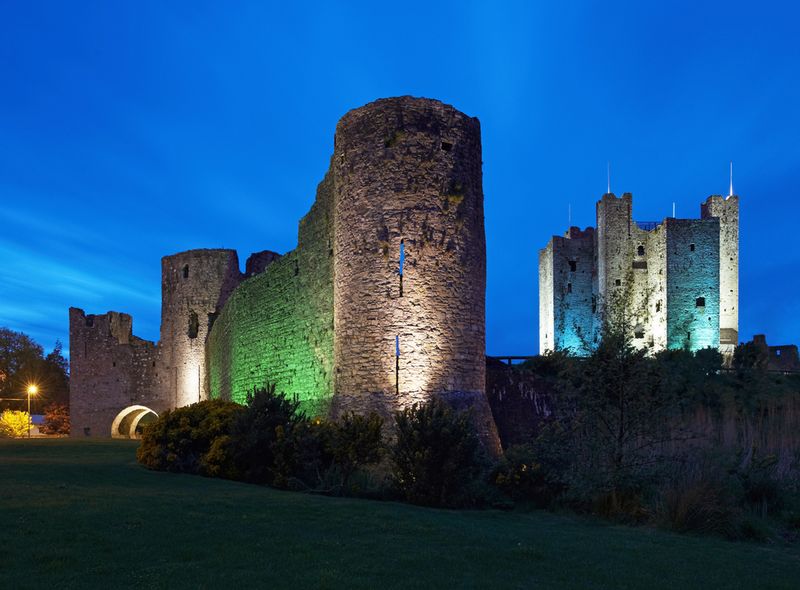
Advertisement
15. Donegal Castle
One of the few castles that were originally built to serve as city centers, Donegal underwent a complete renovation project in the late twentieth century. Part of the restoration included sandblasting ancient limestone walls and rebuilding sections that were destroyed or removed to create modern amenities. Visitors today can view the large stone structure with sharp Gothic architecture and know that this window to the past is an accurate depiction of the administrative and political masterminds that ruled the area centuries ago. Donegal leaders were progressive for their time, and the evidence lies in the detailed and complex infrastructure and layout of the castle. The O’Donnell chieftains were careful to keep residents safe and happy during their tenure and business ventures.
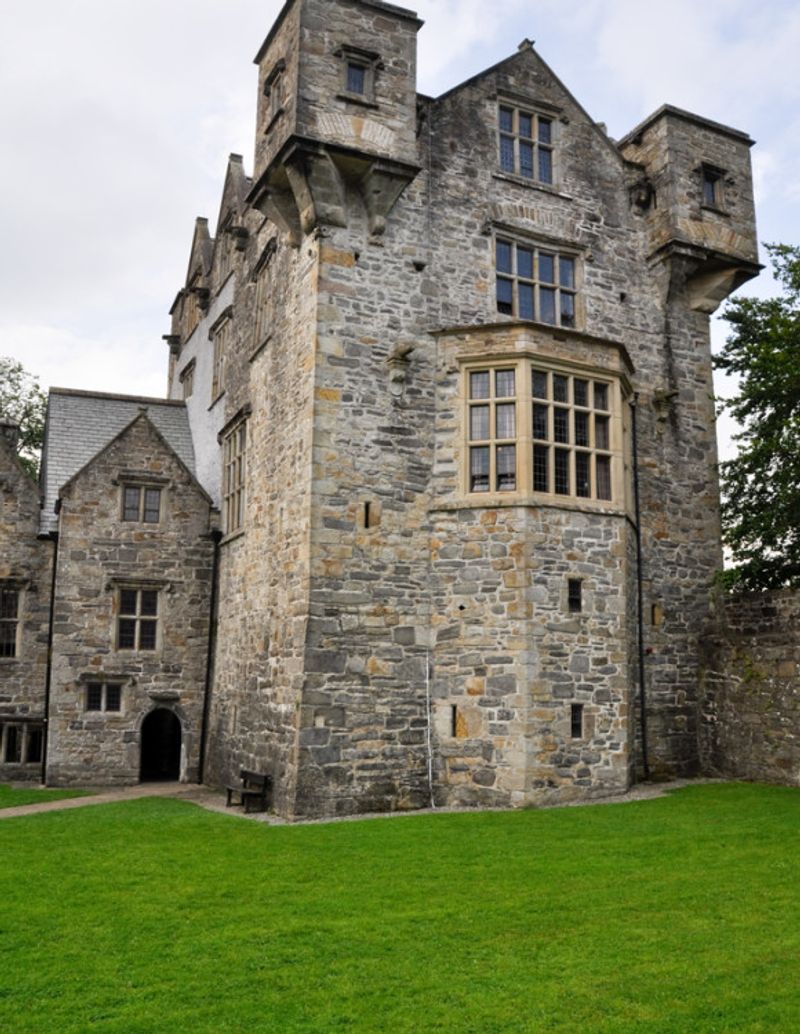
Advertisement